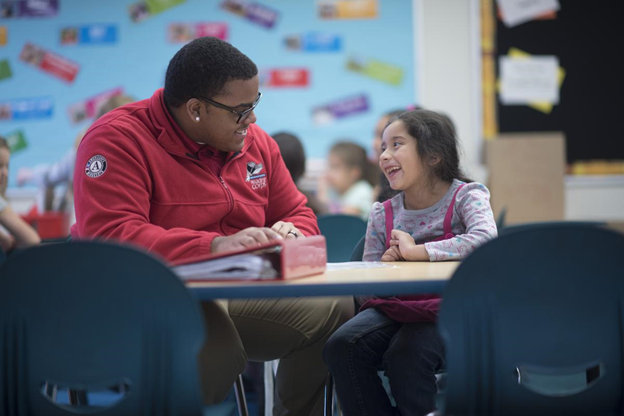And a startling gap it is—with a 36 percent gap between the highest and lowest achieving groups, children from traditionally underprivileged groups (such as non-White racial groups or those eligible for free and reduced-price lunch) often struggle to keep up with their peers. But with the study showing that Reading Corps has had an even greater impact on these students, our tutors are well on their way to ensuring every child in Minnesota has the skills and support they need for a brighter future.
With such positive results, we’re more motivated than ever to spread the message of service across the state and help Minnesota children make great gains in reading. But we can’t do it alone! Interested in joining this vast community of service-minded people helping students succeed every day? Part-time or full-time positions available for college grads, parents, retirees, or anyone looking to make an impact! Visit www.readingandmath.net to learn more about any of our statewide positions or apply now to start in October or January.
Want to dig in to the details? Take a look at some of the study’s key findings below:
Kindergarten Students
- Kindergarten students who received Minnesota Reading Corps tutoring achieved significantly higher letter sound fluency scores by the end of the first semester (Winter 2018) than Kindergarten control students who did not receive the program.
- On average, program students correctly identified an average of 10.9 more letter sounds in one minute than control group students.
- Kindergarten students who received Reading Corps evidence-based tutoring demonstrated additional growth equaling an extra 50 to 90 percent of a year of schooling.
First Grade Students
- First grade students who received Minnesota Reading Corps tutoring achieved significantly higher word-reading scores by the end of the first semester (Winter 2018) than students who did not receive the program.
- Impacts of first grade Reading Corps transferred to the broader reading skill of oral reading fluency, an essential foundational literacy skill.
Second and Third Grade Students
- Minnesota Reading Corps second and third grade students attained significantly higher oral reading fluency scores by the Spring benchmark than control group students.
At Risk Students
- A statistically significant impact of Reading Corps was found for second and third grade students regardless of minority status (i.e., Black), gender, or ELL status.
- Second and third grade students in each of these groups significantly outperformed control students on oral reading fluency scores, and grew faster than the typical Reading Corps student, reflecting a closure of the achievement gap.
- Together, the findings show that the Minnesota Reading Corps program can have a substantial and positive impact on at-risk students who are often overlooked because they fall between students performing at grade level and special education referrals, and typically have fewer resources available to them.
Overall
- Based on findings from two highly rigorous, impartial, and complementary studies, the Minnesota Reading Corps K-3 program conclusively improves K-3 students’ early reading skills.
